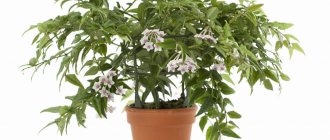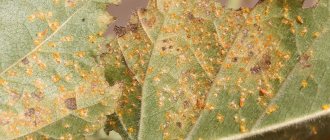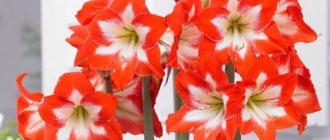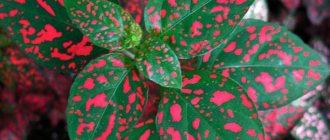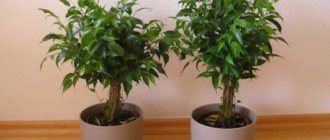Syngonium is one of the most unusual plants on the planet. It is beautiful and fast growing. In structure, it resembles a wild vine, which is dotted with a large number of attractive and large leaves. And it’s not for nothing that it is so interesting in terms of appearance, because it belongs to the aroid family.
For many years now, this noble flower has been grown as an ornamental foliage plant. It is indeed similar to a liana, but has a flexible and grassy trunk, which is strewn almost from beginning to end with an incredible number of aerial roots that cling to the support.
Description and origin of the plant
Syngonium is an evergreen epiphytic vine. This plant belongs to the Araceae family and can be found in nature in South and Central America, as well as in Brazil. Syngonium grows on tree trunks, and its tenacious shoots climb and curl around surfaces, aiming for the sun.
Young vines have pale green stems; they, like the leaves, participate in the process of photosynthesis. As it grows, the skin becomes rougher and changes color to brownish. Fresh shoots of Syngonium are thin, and as they grow they thicken. On average, the diameter of Syngonium stems is about 1-2 cm, and old branches can grow up to 4-6 cm. Usually the stems of the vine do not branch, but if a branch is broken or cut, then after a while fresh shoots begin to appear from the nodes.
In nature, Syngonium can grow up to 15-20 m, but at home its dimensions are much more modest and rarely exceed 2 m. Flexible and elastic shoots of the vine can grow up to 30 cm per year. During this time, the plant usually adds 6-7 new leaves.
Syngonium leaves, depending on the species, can have a wide variety of shapes. There are species with heart-shaped, spear-shaped, arrow-shaped or three-lobed leaf blades, while a plant of one species at a young age can grow foliage of a solid form, and at a more mature age acquire the features of dissected lobed ones. The color of the leaves can also be varied. While some species have leaf blades of a uniform green color, others boast a more original color. There are varieties with almost white leaf blades framed by a bright green border, and there are also types with yellow, red and pink spots, various strokes and specks.
The color intensity of Syngonium leaves depends on the lighting. Often, with a lack of light, variegated and colored leaves acquire a uniform green color.
It is difficult to achieve flowering of Syngonium indoors. In the natural environment, in the spring, unsightly inflorescences-cobs of a greenish color begin to form, almost completely covered with a pinkish or red bract-veil. Syngonium flowers are characterized by cross-pollination. Female and male flowers appear in different parts of the inflorescence-cob. Female flowers are located closer to the base, and male flowers are located at the top of the inflorescence. After pollination, cylindrical and ovoid aromatic fruits begin to form. Each fruit berry contains about 100 small seeds, which are carried by birds and animals that feed on Syngonium fruits.
The aerial roots of Syngonium are formed at the nodes of the shoots and help the vine to cling to supports or crawl along the soil cover. Feeding roots can also be distinguished at the nodes. Usually this is a single process that is slightly larger in size and deviates slightly to the side. Such a developed system allows the plant to obtain food from the soil and other surfaces.
Why does syngonium bloom?
Syngonium growing outside the wild blooms extremely rarely. And its flowering looks rather inconspicuous: an ear covered with a swirling (usually green) blanket.
According to popular beliefs, the flowering of this tropical plant is a positive, good sign, promising good luck and happiness in marriage. Syngonium is often associated with family relationships. It is believed that the flower is able to absorb negative energy, positively influence the relationship between spouses, and even protect against betrayal.
Over time, syngonium is able to change the color and even shape of its leaves. According to signs, this hints at the need for change and innovation in family life.
Is it possible to keep Syngonium at home?
Syngonium has been successfully cultivated as a houseplant for quite some time. During this time, the vine has become “overgrown” with various superstitions and signs, some of which are good and bad.
Syngonium has one unusual property - its leaves begin to “cry” when the air and soil humidity are high. This is how the plant gets rid of excess water and removes it, releasing it in droplets on the surface of the leaf blades. It is believed that in this way Syngonium can “predict” rain, since before precipitation falls, the level of air humidity rises. The same property also manifests itself with excessive watering, then the plant begins to “cry” if the soil in the pot is waterlogged.
Also, many may have heard that Syngonium in the house is a “husband’s husband.” Many vines have received such “fame,” but this is just a belief, so you should not be afraid that an ordinary indoor flower can destroy a family unit or scare men away from a lonely girl.
According to the ancient practice of Feng Shui, plants with sharp edges and ends have a negative effect on the inhabitants of the house. The arrow-shaped leaf plates of Syngonium emit “poisonous breath” that poisons human life. Therefore, in order to neutralize this energy, you can place protective amulets, talismans and other items next to the pot.
Poisonous or not for humans
Like other representatives of the Aroids, Syngonium is poisonous. The milky sap contained in all parts of the plant, when it comes into contact with the skin and mucous membranes, causes severe irritation. It is especially dangerous if juice enters the body, since toxic substances cause severe poisoning. When working with this flower, it is important to take care of personal protective equipment, and then wash your hands thoroughly with plenty of soap and water.
Despite this, you should not give up growing this highly decorative vine. Since at home they most often try to place the plant in hanging pots, it can be installed at such a height that pets and children cannot reach it.
Is it worth starting such a flower at home?
This tropical plant has captivated many flower growers with its elegance and unpretentiousness in maintenance. Syngonium received completely undeserved signs and superstitions of a negative nature. If you want to have such a green pet at home, but signs about it haunt you, listen to your inner feeling.
If you feel joy and inspiration when you see a plant, be sure to buy a flower. It will fill your home with positive energy and a good aura. The plant does not cause you any feelings, but only one anxiety - it’s better not to risk it. It is unlikely that this plant will give you pleasure and become welcome in your home.
Types with photos and names
The fast-growing evergreen vine is undoubtedly attractive in any form. Various types of Syngonium are very popular among gardeners. They all have their own features that give them a special decorative quality.
Pixie
Dwarf variety Syngonium Pixie with small heart-shaped oval leaves of bright colors. The surface of the leaves is shiny, bright green with a light spot in the center and veins of the same color.
Arrow
Another compact variety. Syngonium Arrow has small, variegated, arrow-shaped leaves with green leaves adorned with white veins. This variety looks very cute. When grown, Syngonium Arrow does not have a capricious character and grows quickly if there is suitable support.
Butterfly
The large-leaved variety Syngonium Butterfly is very popular in floriculture. This vine can grow up to 1.5 m long. The leaves of the variety are distinguished by their rare, almost white color. In bright light, the arrow-shaped leaf blades begin to lighten from the midrib and become almost completely white.
Pink Spot
The unusual Syngonium Pink Spot can be grown in the form of a bush or ampel. The variety is distinguished by its rapid growth and characteristic creamy-pink leaves, which are decorated with crimson specks. Old leaves are noticeably paler. If the plant stands in a well-lit place, then its foliage will soon acquire a lighter color.
Pink Splash
The large dark green leaves of Syngonium Pink Splash are decorated with spots and specks of soft pink color.
Brocant
The leaf blades of Syngonium variety Brocant have a greenish-brown color with a pronounced glossy sheen. The veins on the leaves are red or pink.
Confetti
The Syngonium Confetti variety is quite rarely found on sale. The arrow-shaped leaf blades are strewn with pink and yellow splashes and specks. A characteristic feature of the variety is not only the unusual color of the leaves, but also their shape. Young leaves are arrow-shaped, but then they begin to change and take on the shape of an irregular star.
Panda
Syngonium Panda is characterized by rapid growth and good bushiness. The matte dark green leaves of this variety are decorated with light spots and strokes.
Legleaf
Syngonium Legleaf or Podophyllum can add about 45-60 cm per year. Its thin, elastic, climbing stems are decorated with large arrow-shaped rich green leaves. The leaves are planted on long leaf stalks, which can reach 35 cm. With age, the leaf blades acquire a dissected shape.
Auricular (Auricular)
The Syngonium auricularis species grows up to 2 m. The vine adds 70-90 cm per year. Its stems are strong and elastic with a diameter of about 1.5-2.5 cm, and become woody over time. The leaves, arrow-shaped when young, are covered with a waxy layer and colored dark green. Over time, the shape of the foliage changes to dissected and acquires characteristic small “ears” at the base of the plate. The length of the leaf blades is about 6-20 cm, and the width is about 24 cm. The leaves are planted on thin green petioles about 15-40 cm long.
Wendlanda
Although Wendland's syngonium is not characterized by vigorous growth, it has good tenacity. Its shoots attach perfectly to any support. The leaves of this vine are velvety, matte, divided into 3 segments, spear-shaped, and colored deep green. The central longitudinal vein on the surface of the leaves is white and pronounced.
Pink
The arrow-shaped leaves of Syngonium Rosea have a light pinkish tint and a soft green edge. Young leaves have a pronounced light pink color, but over time they become pale, greenish, with red veins.
Mini Pink
The miniature and neat variety Syngonium Mini Pink is decorated with small spear-shaped leaves with a pointed end. The surface of the leaves is dark green with pink veins.
Is it worth starting a syngonium at home or not?
Syngonium is a beautiful and unpretentious plant that does not require complex care. Many people would like to decorate their interior with exotic vines, but they are stopped by the fear of predicting signs. Experts in the field of esotericism recommend listening to your own feelings before buying a flower:
- if the syngonium evokes only sympathy and pleasant feelings, it means that it will not harm the future owner;
- If, at the sight of a flower, anxiety arises, your mood deteriorates, or an inexplicable fear overcomes you, it is better to refrain from purchasing.
Muzhegon
According to the superstition, the syngonium drives away men. It is not recommended to bring the flower into the house where a married couple lives, otherwise the marriage will be destroyed. This property is attributed to almost all vines, however, they have not lost their popularity. Not every family that grows this plant breaks up; many live happily for many years. For those who are afraid of fulfilling a sign, but really want to acquire a beautiful flower, it is better to grow it from a small cutting, rather than bring home an adult vine. It is believed that in this case, family ties will not be threatened.
To death
Another frightening sign is associated with syngonium. It is believed that the flower takes the life of household members if its long lashes hang down. When growing it, you need to make sure that the shoots are directed towards the sky. It is necessary to tie them to supports, use arched supports and other means so that the vine climbs up them. In this case, the bad omen’s prediction will not come true.
Signs about negativity in the house
According to Eastern teachings, syngonium spoils the energy field of the house because it has an undesirable shape of leaves with pointed ends. They resemble arrows. However, the worst thing is that their “tips” are directed in different directions, which makes it difficult to control energy flows.
Sharp angles are capable of pumping out energy, changing its polarity, and then all forces are directed not at maintaining important processes in the body, but at resisting destructive negative energy. For this reason, Chinese sages do not recommend growing syngonium and other plants with leaves with pointed tips at home.
Read also: What signs is a fire associated with?
Useful properties of the plant
In the house, Syngonium creates the atmosphere of a small tropical corner. Thanks to its rapid growth, this vine quickly fills the space provided to it, and many gardeners note its positive effect on the microclimate in the house. Syngonium has a beneficial effect on a person’s emotional state and the atmosphere in the room.
How does it affect the atmosphere in the house?
Despite the prevailing stereotypes, Syngonium is believed to protect family happiness. This flower is perfect for purposeful people, since, according to some opinion, thanks to its rapid growth, its owners solve all matters and problems much faster.
The strong leaves of Syngonium symbolize persistent character, the desire for development and personal growth of its owner. Tropical liana fills the space with life and energy.
Health effects
It is believed that Syngonium in the home has a beneficial effect on the human digestive system and contributes to the speedy cure of gastrointestinal diseases. By acquiring this tropical plant, many believe that illnesses will bypass them, and old diseases will soon be cured.
Effect on emotional state
Syngonium willingly shares its energy with the inhabitants of the home. If placed in the bedroom, it will help relieve tension, organize thoughts and get rid of nightmares.
The rapid growth of the plant helps its owner overcome the fear of the future, open new boundaries in communication with other people and overcome their complexes. For people with conservative views, Syngonium will give them a craving for new things, calm them down, and “teach” them loyalty and tolerance.
By transforming the shape of its leaves, Syngonium helps the owner himself to transform. It is great for creative people and intellectuals.
Where to put according to Feng Shui
Many inhabitants of the planet and experts associate the arrangement of objects and their internal meaning with Feng Shui. This should be taken seriously, because more than one generation has proven that this science works.
It should be understood that it is a person who is the creator of his life. He is able to change his life for the better without any scientific knowledge in the field of Chinese teaching, if he begins to act and think in the right direction.
Feng Shui claims that syngonium has the so-called “poisonous breath”. This opinion was formed due to the interesting shape of the leaves of the plant. They resemble arrows to some extent. And this science believes that every sharp object in the house emits a negative aura - “poisonous breath”.
Therefore, it is believed that the leaves and the flower as a whole fill the home with negative energy, household members begin to quarrel, and misunderstandings arise. In the end, people's quality of life also declines.
But no one says that you should get rid of the flower. It can be useful. It will be enough to surround him with numerous protective amulets that will transform negative energy into positive or simply neutralize it.
Home care
Even a novice gardener can care for Syngonium. This plant is very unpretentious and easily adapts to growing at home. By following simple rules, you can easily grow a healthy vine.
Choosing a seat in the room
At home, Syngonium is placed on the windowsill of an east or west window, the pot is placed on a stand, attached to a wall, or simply placed on a high chest of drawers or a closet. In this case, you should take care of the support. To do this, you can purchase a special support or stretch ropes and threads and allow the vine to freely cling to the surface.
It is better to protect Syngonium from working heating sources, so when choosing a corner to install a flower pot, it is important to ensure that the branches of the vine do not fall off and are not close to radiators and heaters.
What kind of pot and soil do you need?
Choose a tall, stable pot for planting with good drainage holes to remove moisture.
Syngonium is undemanding to soil composition. It grows well in loose, well-drained soil with a slightly acidic or neutral reaction (6-7 pH). A suitable soil mixture can be prepared from leaf substrate, turf, peat and sand (1/1/1/0.5). Coal, finely chopped brick, bark and bone meal are added to the finished soil.
Lighting
Syngonium is one of the shade-tolerant plants. He loves good light, but is afraid of intense sun exposure. In diffused light or in light partial shade, the flower will feel as if it were in its native, natural environment.
Species and varieties with monochromatic leaves feel best in a shaded place, while variegated, bright varieties, when exposed to too intense light, begin to lose their properties and acquire a pale, unsightly color.
Watering and spraying
In order for this wildly growing vine to grow and develop harmoniously, it is necessary to constantly maintain the earthen ball in a moderately moist state. In hot weather, Syngonium is watered abundantly, and with the arrival of winter, watering is reduced to moderate and the soil is moistened as the top layer of soil dries out.
If water has accumulated in the pan after watering, it must be drained. Water for irrigation must first be settled at room temperature.
In summer, Syngonium should be frequently sprayed with warm, soft water and the leaves should be wiped to remove dust.
Air humidity
Syngonium loves a moderately humid climate. In winter, it is removed away from working batteries, as dry air burns the beautiful leaves of the vine. To increase humidity, you need to frequently spray the leaves, install a household humidifier, an aquarium nearby, or place a flower pot on a tray with wet pebbles or expanded clay.
Feeding and fertilizer
From spring to autumn, Syngonium is fed with liquid mineral preparations for decorative foliage crops. When choosing a fertilizer for fertilizing, it is important to pay attention to the composition and give preference to fertilizer with a minimum calcium content. Nutrient formulations are applied once a month.
Pruning and crown formation
Syngonium tolerates pruning well and is easy to shape. It can be grown without pruning or pinching as an ampel form, or several branches can be planted in one pot at once to form a neat bush.
To make side branches appear more actively, shoots of Syngonium are pinched above 6-7 leaves. You can also form a beautiful tree with the help of vertical supports, which Syngonium shoots willingly entwine.
Rest period
In winter, Syngonium stops growing. At this time, they stop feeding it and reduce watering to once every 7 days.
Bloom
As a rule, it is almost impossible to achieve flowering of Syngonium at home. But when grown in a greenhouse in the spring, you can observe the appearance of a small inflorescence-cob. After the inflorescence wilts, it is better to remove it so that the plant does not waste energy feeding the seeds.
Errors in care and ways to eliminate them
Despite its unpretentiousness in terms of growing conditions and care, if it is placed incorrectly, there is a lack of light and the wrong watering regime is selected, Syngonium may experience discomfort. Most often, the following signs indicate errors in care:
- Changing the color of variegated leaves to a single color is a lack of light. The plant should be moved closer to the light source.
- Change in leaf color to paler, lack of shine - excessive watering or poor drainage. In this case, replanting into a new pot with holes and a high-quality drainage layer helps, and the watering regime is adjusted depending on the speed of drying of the top layer of the pot’s contents.
- Plaque, spots on the leaves - poor quality water for spraying. Stains and plaque are removed with a soft damp cloth or sponge, and the water for spraying is pre-boiled and cooled, or infused.
Possible difficulties during cultivation
When kept at home, the following difficulties may arise:
- Drying of the edges and tips of the leaves - dry air.
- Dark spots on leaf blades, burns - this is how the plant reacts to exposure to direct sunlight, waterlogging of the substrate, low air temperature and cold or hard water for irrigation.
- Pale, dull leaves signal high humidity in the room.
- Slow growth, young leaves grow small - lack of sun or nutrients.
- Yellowing of stems and leaves is an excess of nutrition; it is necessary to reduce the concentration of fertilizer or the frequency of fertilizing.
- The roots protrude above the surface of the earthen clod - transplantation into a new pot is required. If it is not yet possible to transplant the Syngonium, then you can add a little fresh substrate to hide the exposed roots.
Pests and diseases of Syngonium
The liana is quite resistant to pests and diseases. However, errors in care and unfavorable conditions for its cultivation can lead to the appearance of harmful insects and loss of decorativeness of the leaves.
Among the pests that can settle on a flower are scale insects, thrips, aphids, and spider mites, which feed on the sap of the plant. If the leaves on the syngonium turn yellow , dry out and fall off, and the vine itself has slowed down, you need to carefully examine the leaves and shoots. What to do if pests are found? You can get rid of them with the help of special insecticidal preparations - Decisa, Aktellika, Fitoverma. Insecticides should be used according to instructions.
Why do syngonium leaves dry out?
The tips of the leaves may darken and dry out due to dry air in the house. Spray the vine more often, move it away from working batteries or place it on a tray with wet expanded clay.
Spots on Syngonium leaves
There may be several reasons:
- If the plant is on a southern windowsill, then brown spots may appear on its leaves from direct sunlight. The flower should be moved to another place.
- Due to waterlogging of the soil and overcooling of the roots, spots may also appear on the leaves of syngonium (see photo). Review the care or remove the flower away from drafts.
Why do syngonium leaves turn yellow - what to do?
First of all, you need to find out the cause of the problem:
- The plant is affected by insects, which must be gotten rid of using the methods described above.
- If the leaves not only turn yellow, but also become small, it means the flower lacks nutrients. It should be fed or transplanted into new soil (if an adult plant grows in one pot for a long time).
- Leaves may turn yellow and wither due to abundant and frequent watering. The top layer of soil must dry out before the next watering. Water should always be drained from the tray.
Leaves fade and lose their decorative effect
Most likely, the plant does not have enough light. In this case, the multi-colored leaves will become simply green, dull and small, and the shoots will begin to stretch.
Disease and pest control
With proper care and maintenance conditions, Syngonium is rarely attacked by pests and almost never gets sick. A healthy plant has good immunity, but if a “green neighbor” infected with parasites or diseases appears nearby, then the disease soon spreads to all potted plantings.
Signs of rot
Rot affects Syngonium at low air temperatures and excessive watering. If the stems of the plant begin to darken, this indicates that the root system is damaged by gray rot. Then the damaged stems are cut off and the plant is replanted. During transplantation, the roots are cleared of soil, damaged areas are removed, the cuts are treated with charcoal, or the root system is washed with a weak solution of potassium permanganate. After this, Syngonium is transplanted into a new pot with a complete replacement of the substrate.
When a plant is infected with rot, it is better to immediately root the remaining healthy parts of the shoots.
Aphid
Aphids feed on the sap of young leaves and shoots. It is based in the lower part of the leaf blades, and the result of its activity is pale, yellow, deformed leaves that soon fall off. Aphids often appear at low air humidity and high temperature.
If the extent of the damage is still limited to only a few leaves, then they are simply removed, but in more advanced cases it is better to resort to the help of insecticides.
Shchitovka
Scale insects attack stems and leaves. Then you can notice a slowdown in the growth of Syngonium, partial or complete drying of the foliage. If measures are not taken in time, the vine will soon wither and die. Removing pests with a soapy sponge, a warm shower and treatment with insecticides helps.
Trips
Thrips settle on the lower part of the leaves, after which the surface of the plates becomes covered with light spots. In advanced cases, the entire leaf becomes grayish-brown and acquires a metallic sheen. In this case, the affected parts are removed, and the plant is treated with chemicals against pests.
Spider mite
Mites entangle leaves and stems in a dense web. The infected plant withers, fresh leaves become deformed and fall off. In the fight against ticks, traditional methods and chemicals are used. You can wash Syngonium with soapy water, give it a warm shower, or use insecticides.
Crown formation
This child of the tropics grows quickly, readily clings to any support and lends itself well to crown formation.
The “trunk” will be a support with a fiber – moss or coconut – winding. The stems of the syngonium should be attached to it, then they will grow into the winding with aerial roots and become firmly attached to it.
To stimulate branching, shoots are pinched after the sixth or seventh leaf . As a result, a lush crown is formed.
When working with syngonium, you should be careful, remembering the poisonous juice and wash your hands thoroughly after caring for it .
Planting and transplanting
Young Syngoniums are replanted every year in the spring, and older ones every few years, when the roots begin to protrude from the pot. When replanting, a thick layer of drainage made of expanded clay, brick, clay shards or any other materials is placed on the bottom of the dish.
Preparatory work
The new pot should be slightly larger than the previous one, otherwise Syngonium will concentrate all its efforts on growing the root system. If the plant was recently brought from the store, then it is given at least a week to adapt, and only then do they begin replanting.
If you wish, you can take care of the support, which you can purchase at a flower shop or build with your own hands.
Step by step process
The process of transplanting Syngonium is quite simple and does not require special knowledge. The transplant is carried out in the following sequence:
- A drainage layer is formed at the bottom of the pot.
- The pot is filled 1/3 with prepared soil. At the same stage, the support is secured.
- The roots of Syngonium are carefully straightened and immersed in the pot.
- The dishes are filled with soil.
- The plant is well watered. After complete absorption of moisture and shrinkage of the contents of the pot, add a little substrate.
- The water that has flowed into the pan is drained.
For the first 2 weeks after transplantation, the plant is not fed; it is often sprayed and watered well. After Syngonium takes root in the new pot, it will actively grow and begin to grow new leaves and shoots.
Planting a plant
The pot can be wide, but not too high; the size should ensure the development of the root system.
A good drainage layer - expanded clay or small pebbles.
When planting, it is useful to immediately provide this vine with support - a tube covered with moss or coconut fiber. Aerial roots will grow into this shell, further securing the plant.
The support tube is located in the center of the pot, and then soil is poured up to a third of its volume.
Then the straightened root system is placed, the soil is filled to the desired level and compacted.
You can grow the vine in an ampelous form. In this case, the syngonium is planted in a hanging pot, and its shoots hang freely.
The plant is watered. They do not feed for two to three weeks.
We understand how to care for Saintpaulia at home and the peculiarities of violet propagation. We discuss https://floradoma.com/komnatnyie-rasteniya/sansevieriya-uhod-v-domashnih-usloviyah.html what is important in caring for Sansevieria at home.
Reproduction
Syngonium can be propagated quite easily by the vegetative method, rooting apical and stem cuttings. Planting material easily takes root at any time of the year, but it is best in spring or summer. Cuttings allow you to get a new vine in a short time.
Planting apical cuttings
For rooting, select the upper parts of shoots about 10-15 cm long with 2-3 internodes and aerial roots. Cuttings root well in water or a mixture of sand, moss and peat. Until the cuttings grow roots, they are covered with a glass jar or film and kept at a temperature of +25-+27 degrees. After rooting, the cover is removed and the seedlings are planted in pots with substrate. To make the plantings look more lush and dense, you can place several seedlings in one pot at once.
Rooting a piece of stem
To propagate Syngonium by stem, you must first prepare a pot with a nutrient substrate, according to the preferences of the crop. The dishes are placed near the plant, a long branch with well-developed aerial roots and several nodes is selected and pinned to the soil surface. Aerial roots need to be buried in soil or slightly buried in part of the stem. Until the cuttings have taken root, they are watered and fertilized, and after 1-2 weeks, after part of the shoot has acquired its own root system, it and the mother plant are separated.
Advantages of syngonium
Syngonium has become so popular among flower growers for a reason and has acquired a large number of superstitions. This plant has a number of positive qualities that you can pay attention to if you have any doubts:
- The ability to purify the air from formaldehyde, xylene, benzene and toluene.
- Increasing indoor air humidity.
- Easy to grow and amazing survival rate.
- Bright appearance, high level of decorativeness.
- Absorption of carbon dioxide (according to research, syngonium can reduce its amount in a room by 23%).
- The ability to grow in water without soil, thanks to which you can create very beautiful interior compositions.
- The presence of miniature plant varieties that can be used to decorate work surfaces, shelves or coffee tables.
- Easy propagation and transplantation.
- A wide variety of growing methods: from the usual placement in a pot with a support to creating a variety of living walls, screens or partitions.
Syngonium in the interior: photo
In phytodesign, Syngonium can be found in many applications. It fits perfectly into any interior, and thanks to the ability to grow this vine in a hanging pot, you can form a vertical green carpet or allow the flower to hang freely.
If you install a support, you can give the Syngonium almost any shape. The liana will quickly cover the surface offered to it.
Miniature varieties of Syngonium will definitely appeal to lovers of unusual indoor gardening. Dwarf varieties are perfect for decorating florariums in solo planting or as part of a composition.
In the house, Syngonium creates a unique atmosphere of warmth and comfort. This plant even brings a part of the tropical forest to an ordinary city apartment. With simple care, Syngonium will delight its owner with a graceful and elegant look all year round.
Types of syngonium
Most often, syngoniums differ only in the shape and color of the leaves. Let's look at a few particularly spectacular and popular varieties!
Auricular syngonium
Its leaves do indeed slightly resemble drooping ears, but at the same time they are very elastic. And also large, wide, and a beautiful glossy green shade.
Photo: domashniecvety.ru
Pink syngonium
One of the most decorative species with a delicate pastel pink tint of leaves. Moreover, they are not monochromatic, but covered with brighter pink or, conversely, greenish spots.
Photo: bercocock.id
Syngonium Brocant
Its peculiarity is also in an unusual shade, only this time not pink, but chocolate brown. Against the background of elongated leaf plates, reddish veins stand out even more clearly.
Photo: m.nn.ru
Wendland Syngonium
This species is suitable for gardeners who prefer slow-growing plants. The leaves here are smaller, up to 18 cm, and resemble an arrow in shape. They also have an unusual velvety texture.
Photo: irkagro.ru
Syngonium Pixie
Compact syngonium with heart-shaped leaves is ideal for indoor cultivation. It has a delicate light green color with a silver tint and a darker edge.
Photo: instagram.com
Legleaf Syngonium
A tall, heat-loving species that has become the basis for many breeding hybrids. It grows quickly, and in a year it stretches up to 60 cm. The leaf plates really follow the shape of the foot.
Photo: youla.ru
Syngonium Butterfly
The most unpretentious syngonium even by the standards of this completely undemanding plant. The color can be almost any, depending on the variety.
Photo: vosadu-li-vogorode.ru
Indoor flowers: photos and names (catalog)
Syngonium propagation
Syngonium can be propagated easily and fairly quickly. The simplest methods are cuttings and seed propagation. You can use the method of dividing the rhizome, but the roots of the plant are so thin and tightly tangled that they will certainly be damaged when divided.
Propagation of syngonium by cuttings
- For propagation by cuttings, apical cuttings are taken from the syngonium, 13-15 cm long, and each stem should have 2-3 leaves.
- Cuttings take root easily, both in water and in the substrate. You can use wet sand or sphagnum.
- The cuttings are covered with film to create a “greenhouse effect” and left in a warm place, periodically watering the soil.
- The plant will take root in 3-4 weeks.
- After which it can be transplanted into a pot or left to “gain strength”.
Growing syngonium from seeds
For propagation by syngonium seeds, only fresh planting material is used, since the seeds of this plant cannot be stored for a long time and do not germinate when sown. You can sow the seeds directly into the pot in which the vine will grow. Seeds are placed in moist soil, lightly sprinkled with sand or sphagnum and covered with film.
